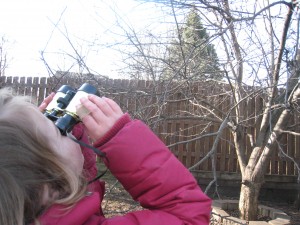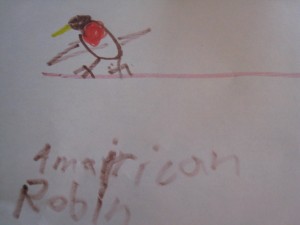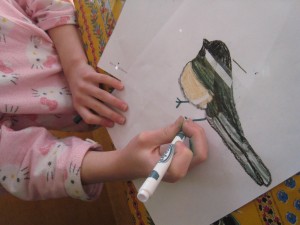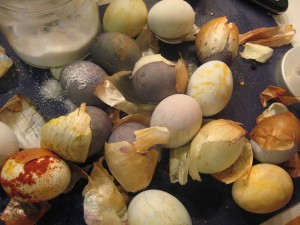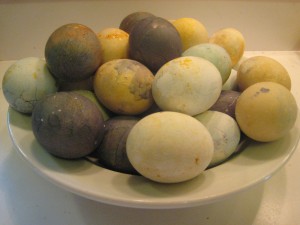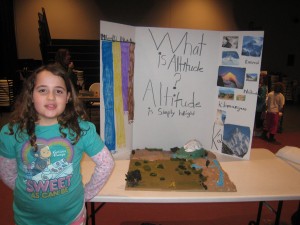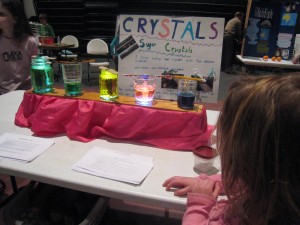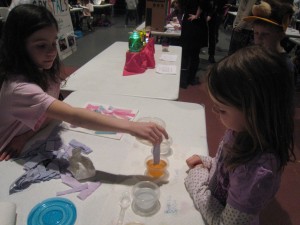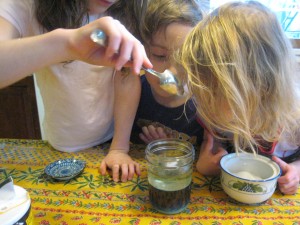Tag: kids’
Backyard Birding
- by KitchenPantryScientist
The weekend started off when I took our four-year old to see the movie “How to Train Your Dragon” (I think I liked it as much as she did) and left the theater talking about what it would be like to fly. We did a craft project, taking a butterfly from egg to wings, and toppped Sunday off by going for a bird-watching walk through the neighborhood and nearby woods.
With the arrival of spring in Minnesota, birds are everywhere! Cardinals are singing outside as I type. On our walk, we saw dozens of robins and woodpeckers. A hawk soared over and a nearby crow cawed at a Turkey Buzzard that soared down too close to his meal. I knew it was a buzzard because it was entirely black and I recognized the shape of its wingtips.
Do you know how to tell what kind of bird you’re looking at? The study of birds is called Ornithology and bird watching can be fun for all ages.
Why not go on a bird walk with your kids? Take a bird guide, if you have one, a notebook (their science notebook would be perfect) or a piece of paper and write down or draw what the birds you see look like. Binoculars would be great too, but aren’t necessary. Be sure to notice what color the birds you see are, special markings they might have, how big they are, and how their wings are shaped. You can even memorize or record how their song sounds. Do they sing “chick-a-dee-dee-dee” or “who-cooks-for-you?” If you feel like it, count how many robins or cardinals you see!
When you get home from your walk, you can use a Bird Identification book to look up your discoveries, or you can go online and use one of the many, interactive resources there. I decided to use whatbird.com and allaboutbirds.org from the Cornell Lab of Ornithology, to try to identify the hawk that we saw. Although I thought it was a red-tail hawk, I wasn’t sure. Both websites were helpful. Whatbird.com offered a visual search, where you could choose from different fields, like color and wing shape to narrow your identification. It worked pretty well, but didn’t seem foolproof. Allaboutbirds.org had a field where you could search birds by name and shape, which had nice photos you could use to identify what you had seen. Your kids could even make a guide of birds in your area!
So get those kids outside and let them hone their observations skills! No one offers a better show at a better price than Mother Nature!
Spectacular Eggsperiment- Natural Dyes
- by KitchenPantryScientist
Make your own egg dye! Boil colorful fruit, vegetables and spices with 4-8 cups water and a few Tbs. of white vinegar. When the water is boiling, add raw eggs and boil for 10 minutes. The pigment in the fruits and veggies will be absorbed by the egg’s porous surface as they cook. Let the eggs sit in the dye until cool. Then, wrap the wet eggs in onion skins or rub with paprika for yellow. We had the best luck with blueberries, curry and red cabbage. Experiment to see what makes the best colors! What worked best for you? Coffee? Tea? rhubarb? Don’t forget to eat your creations. Hard-boiled eggs make a great snack!
Imagination Fair
- by KitchenPantryScientist
Our school’s Imagination Fair is one of my kids’ favorite events of the year. I love it too. One of the best things about this gathering is that it is not a competition. I also love that there are no rules and guidelines. My kids spend their days following rules and competing against others, whether it is in school or in sports. For the Imagination Fair, kids simply create, demonstrate, or show off something that interests them and then have a great time walking around and checking out everyone else’s projects.
Sugar cube castles towered over posters about magnets, and jars full of home-grown crystals stood next to Lego creations. There were plastic sharks wired to foam board, a cardboard reproduction of the Olympics half-pipe and a poster about money of the world. You could pet a bunny or “test your knowledge” to win a sucker. My four-year old especially loved the circut table, where one boy had inventions that spun and beeped when you made electrical connections.
I’m thinking of putting an “Imagination Fair” together this summer, in my back yard, for the neighborhood kids. What better way to let kids be kids?
Sweet (and Salty) Lava Lamps
- by KitchenPantryScientist
Pull out a jar, a bottle of vegetable oil, some food coloring, salt, sugar, and water to mix up this easy experiment! 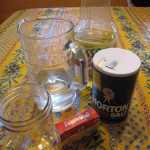
Fill the jar about halfway up with water and add a few drops of food coloring for contrast. Add about half as much vegetable oil to the jar and watch it float to the top. Now, a spoonful at a time, add salt to the jar. The salt will pull some of the oil down with it, but will release the oil as it dissolves and the oil will float back to the top. This will make your science experiment look like a real lava lamp. Keep adding salt to make it keep working. Now, try adding sugar or even sand. Kosher salt worked really well!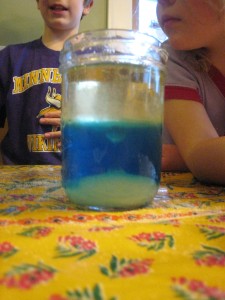
What worked the best for you? Do you know why oil floats to the top of the water? Email me your answers in the comments section of this post for a chance to win a KITCHENPANTRYSCIENTIST.COM tee shirt (size M.) I’ll do a drawing for a winner in two weeks! Thanks to PBSkids/DragonflyTV’s website for this fun idea. Check out their website for more great kids’ science!
Window Sprouts
- by KitchenPantryScientist
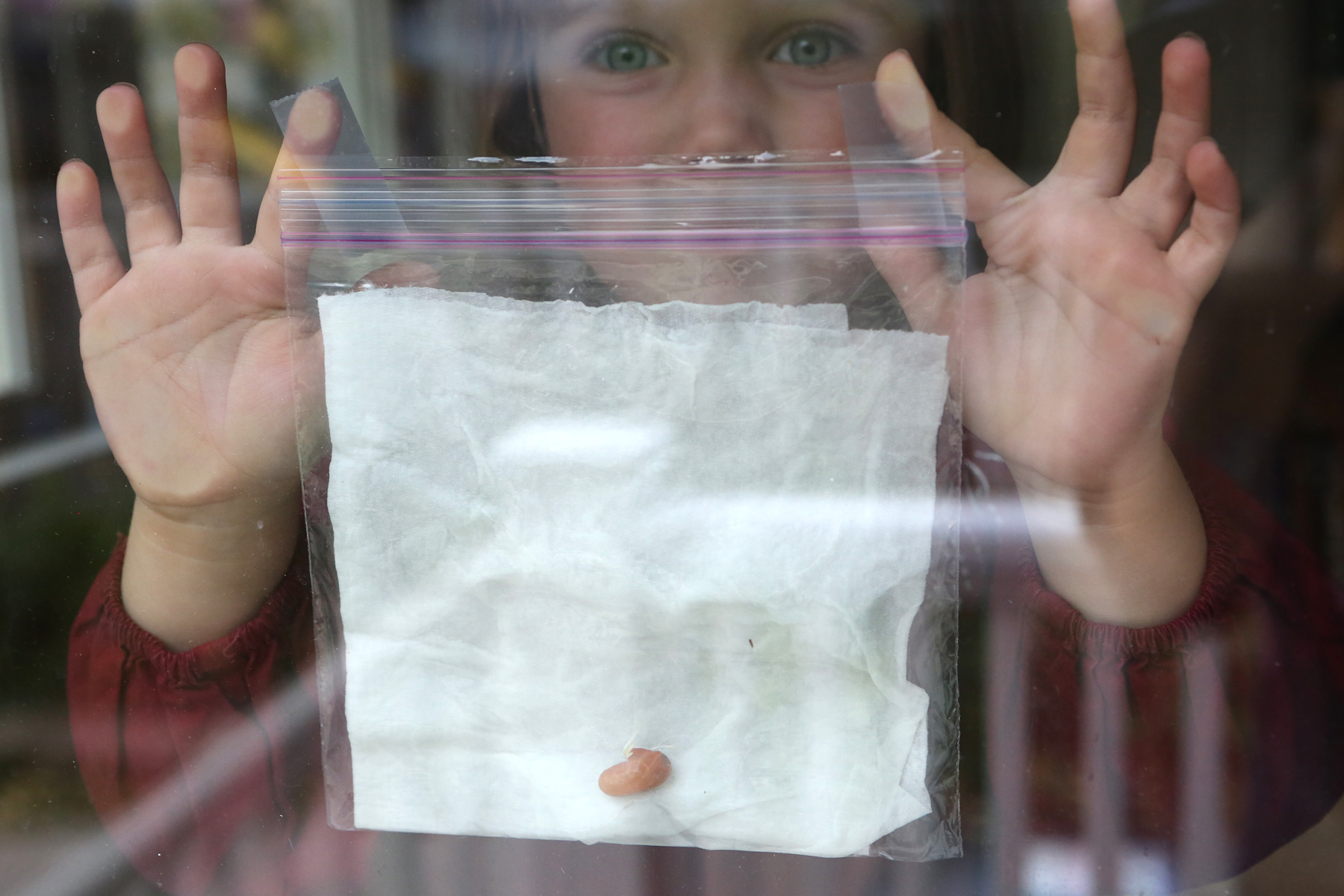
Window Sprouts from Kitchen Science Lab for Kids Quarto Books
When I was growing up, we always had a vegetable garden. My mom grew up on a farm and was appalled when my sister or I would throw a fit upon finding a tiny bug in our lovely, homegrown lettuce salad. “Where do you think the lettuce came from?” she would ask, and we’d have to admit that it grew in dirt, outside, and that there are bugs out there. It was an invaluable lesson and one I hope I can pass along to my kids. Our world has become too sterile and disconnected from nature. Like plants, we need dirt, sunshine, fresh air and clean water to survive. Who cares about a few bugs?
Try planting a few bean and pea sprouts in plastic bags to show your kids how sunshine and water can make a plant sprout!
You’ll need a few plastic zip-lock bags, dry beans from your pantry (or peas and beans from the garden seed packs you can find almost anywhere ), paper towels and water. Cut a paper towel so that you can fold it a few times and it will fit into the zip-lock baggie. Have your child soak it with water and help them put it into the bag so that it’s relatively flat. Then, give them two beans or seeds to place in the bag, near the bottom.
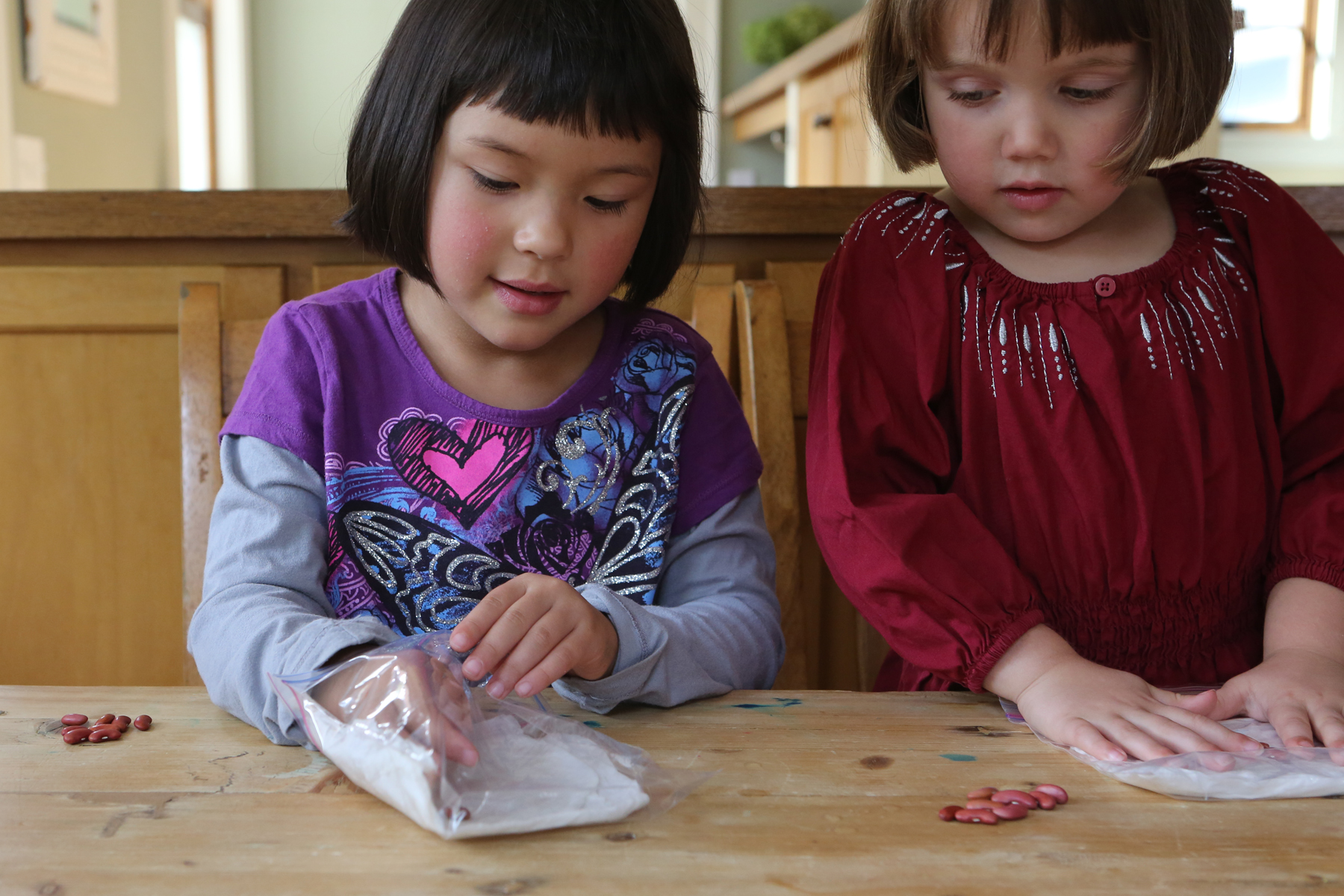
Window Sprouts from Kitchen Science Lab for Kids Quarto Books
I had to stuff a little piece of paper towel into the bottom of the bags so that the seeds wouldn’t sit in the extra water at the bottom. Let your child help seal the bag. Leave an opening near the top so the plants can get some air. Finally, tape the bag in a window with the beans facing you so that your child can watch them as they grow. (I’d recommend finding a window where they won’t get blasted by hot sun all day, or they might fry.)
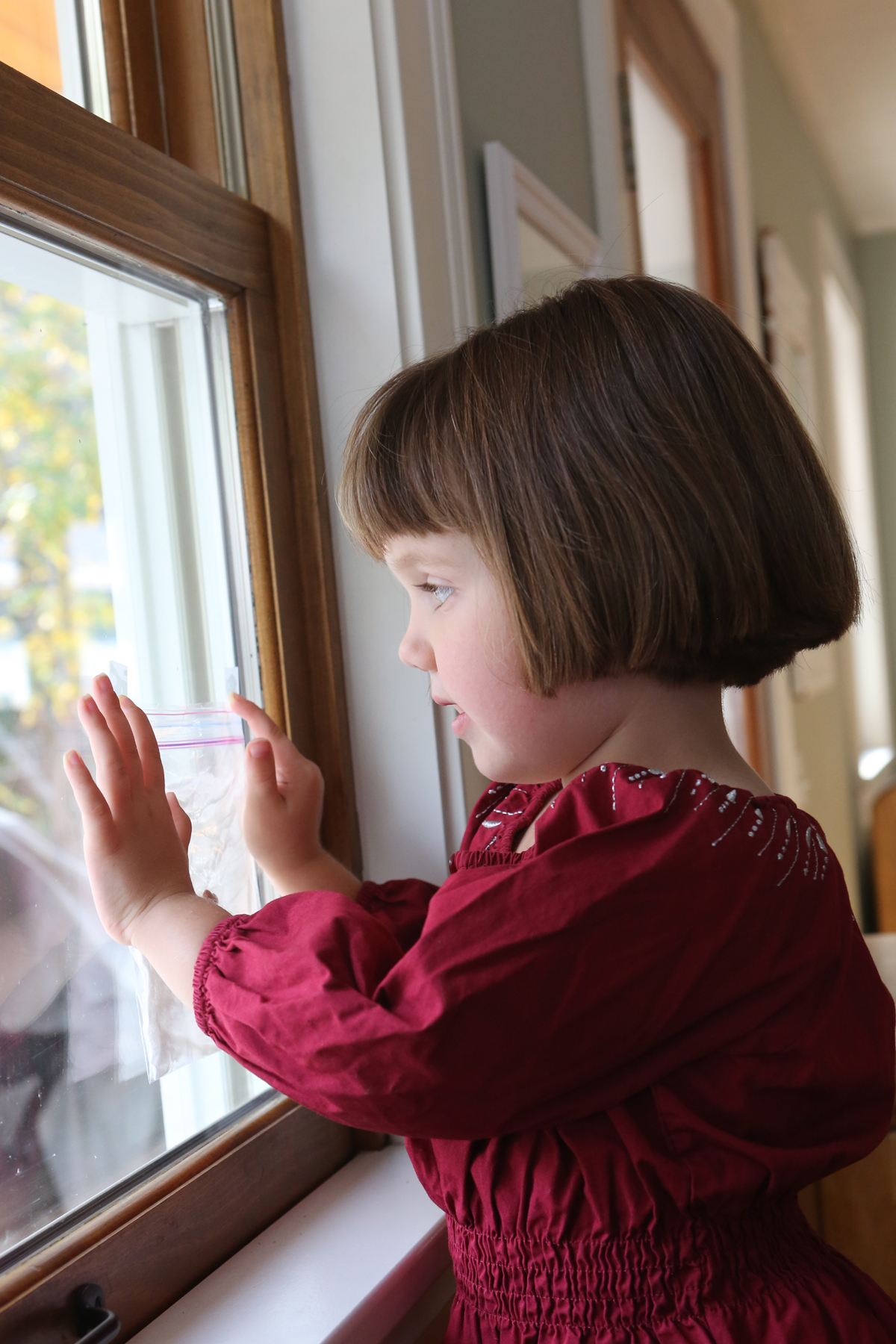
Window Sprouts from Kitchen Science Lab for Kids Quarto Books
As you do the project, ask your child what they think plants need to grow (Plants need light, air, water and nutrients, or “food.”) Ask them how they think the seed can grow without the dirt as “food.” Tell them that when a plant first sprouts, it gets its nutrients from the seed itself. They can watch the seed shrink as the plant grows. Have them draw the seed/plant in their science notebook as it changes. Older kids can measure the plants as they grow. Eventually, you should be able to transplant them to a cup with dirt, or directly into a garden. You may have to add water to the paper towels if they dry out. Play it by ear.
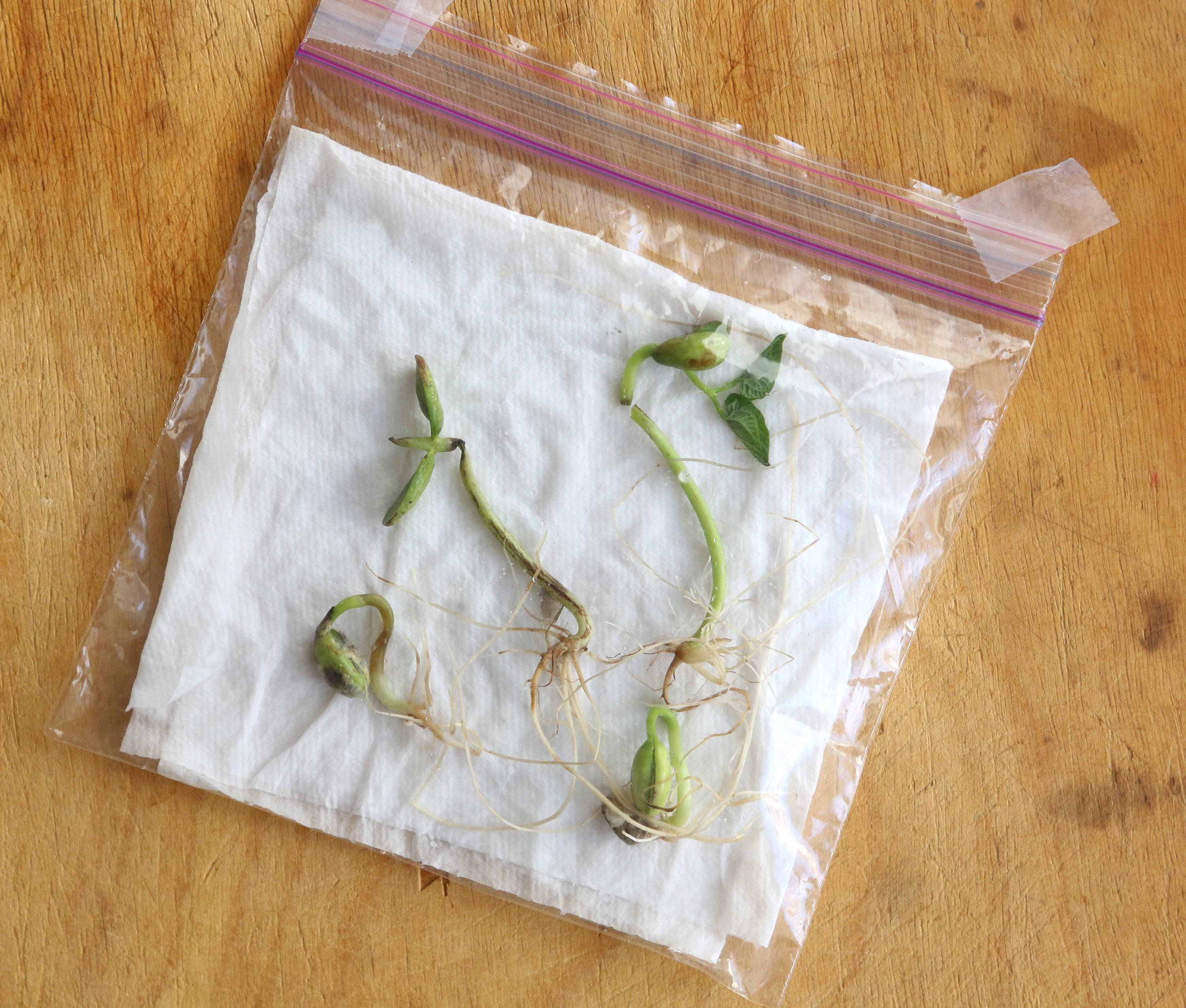
Window Sprouts from Kitchen Science Lab for Kids Quarto Books
Plant a garden this spring, even a very tiny one in pots! Let your kids get their hands in the dirt. Help them nurture plants that will eventually nurture them. (Children are much more interested in tasting vegetables that they’ve grown themselves. ) It is one of the most rewarding activities you can do with your children, and takes only dirt, seeds and water! Find your inner farmer and let your children find theirs- organic food is cheap when you grow it yourself!
Invisible Ink
- by KitchenPantryScientist
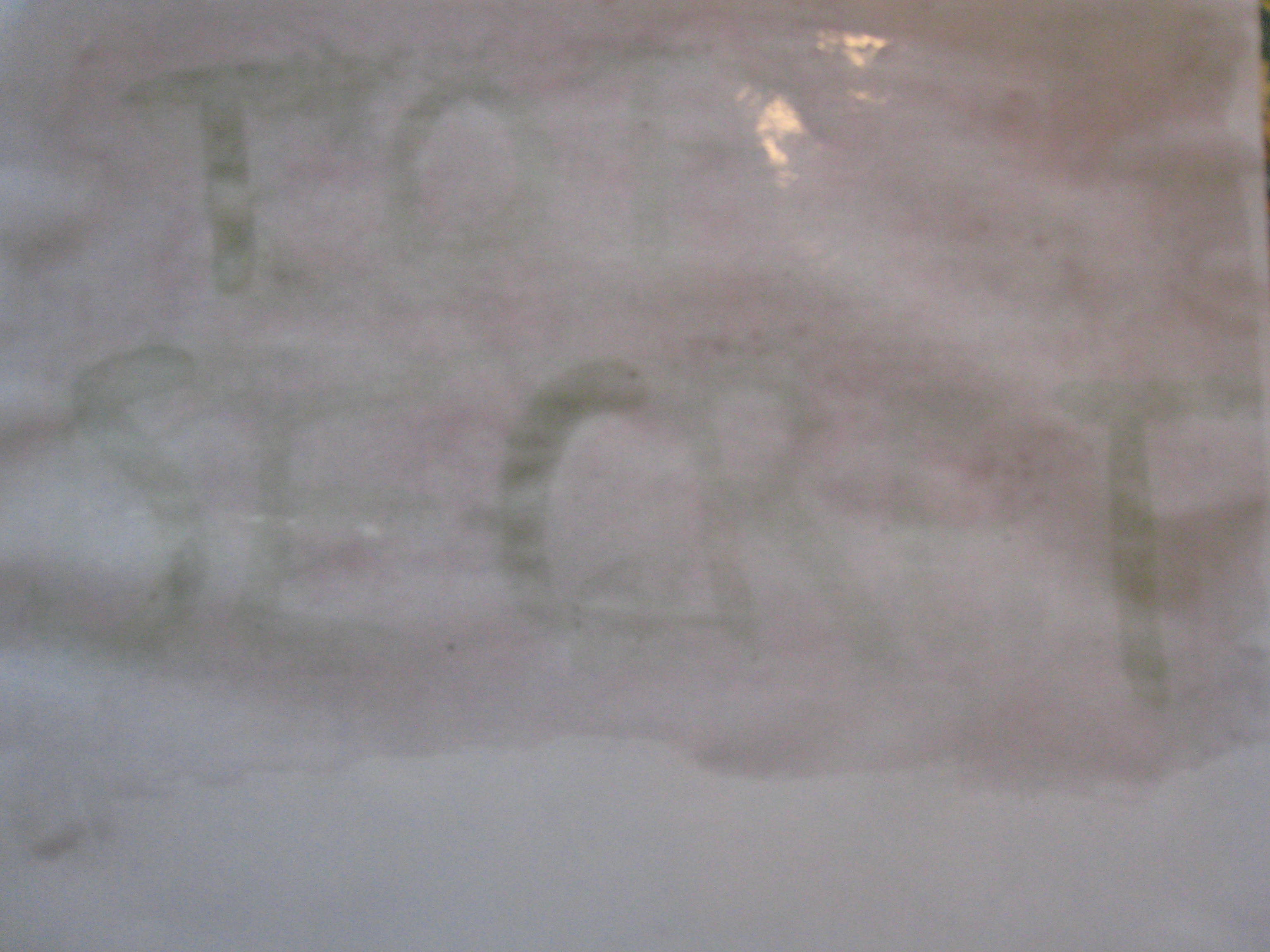
My kids love to play spy games. They spy on us, they spy on each other. They write notes in code and hide them all over the house. I knew right away that they would have fun with this science project. There’s definately enough 9-year old girl left in me to think it’s really cool too! This is a project that kids can actually do IN their science notebooks (or, they can just tape their note into the notebook when it is dry.) Like most projects, it doesn’t work perfectly. However, it is fun and you will see a message appear although it may be fuzzy.
All you need is paper, water, baking soda and grape juice. Simply add a few big spoonfuls of baking soda to a cup of water and mix it well (I heated the solution in the microwave to warm it in an attempt to dissolve more of the soda.) Dip a paint brush in the mixture and write a message or draw a picture on your paper. Let the paper dry completely.

When you are ready to reveal the secret code, have them paint over the paper with grape juice. Don’t use to much, or it will be a sloppy mess. The grape juice will react with the baking soda on the paper,changing the acidity of the grape juice and causing the words to appear a little darker than the background of the regular juice. Ours turned green. You could also try some different types of juice to see what happens. Have your kids record their results in their science notebooks! If they are interested, have them look up the definition for acid and base on a science website like chemistry.about.com. 
The words weren’t very clear, but it was still a fun project and my kids loved it. Maybe your kids can perfect the technique. After all, trouble-shooting is a great life skill.
Supersonic Science for Kids-Throw a Rock into a Pond
- by KitchenPantryScientist
StephenOrnes at sciencenews.org reports that scientists have measured the speed of air escaping the column that is formed when a rock thrown into a flat body of water, like a pond. When the column collapses, the air that is pushed out moves faster than the speed of sound (760 miles an hour.) To read more and watch a video, go to http://www.sciencenews.org/view/generic/id/55900/title/FOR_KIDS_Supersonic_splash_.
How to Make Tie-Dye Milk Video
- by KitchenPantryScientist
Kids from two to twenty will have fun playing with this science project. Click here for my blog post on Tie-Dye Milk and to read more about surface tension
[vsw id=”SDjHnmhakzU” source=”youtube” width=”425″ height=”344″ autoplay=”no”]
How to Make Cornstarch Goo video
- by KitchenPantryScientist
[vsw id=”pFyLGFXrIhw” source=”youtube” width=”425″ height=”344″ autoplay=”no”]
To read my printed post on this experiment, click here.
Sky Gazing
- by KitchenPantryScientist
If the sky is clear tonight (Friday, Jan.29,) be sure to look up. Not only will the moon be full, but Mars will be visible close by (about a fist’s length) and appear red to the naked eye as it comes within 62 million miles from earth and lines up opposite the sun. Read more here.
